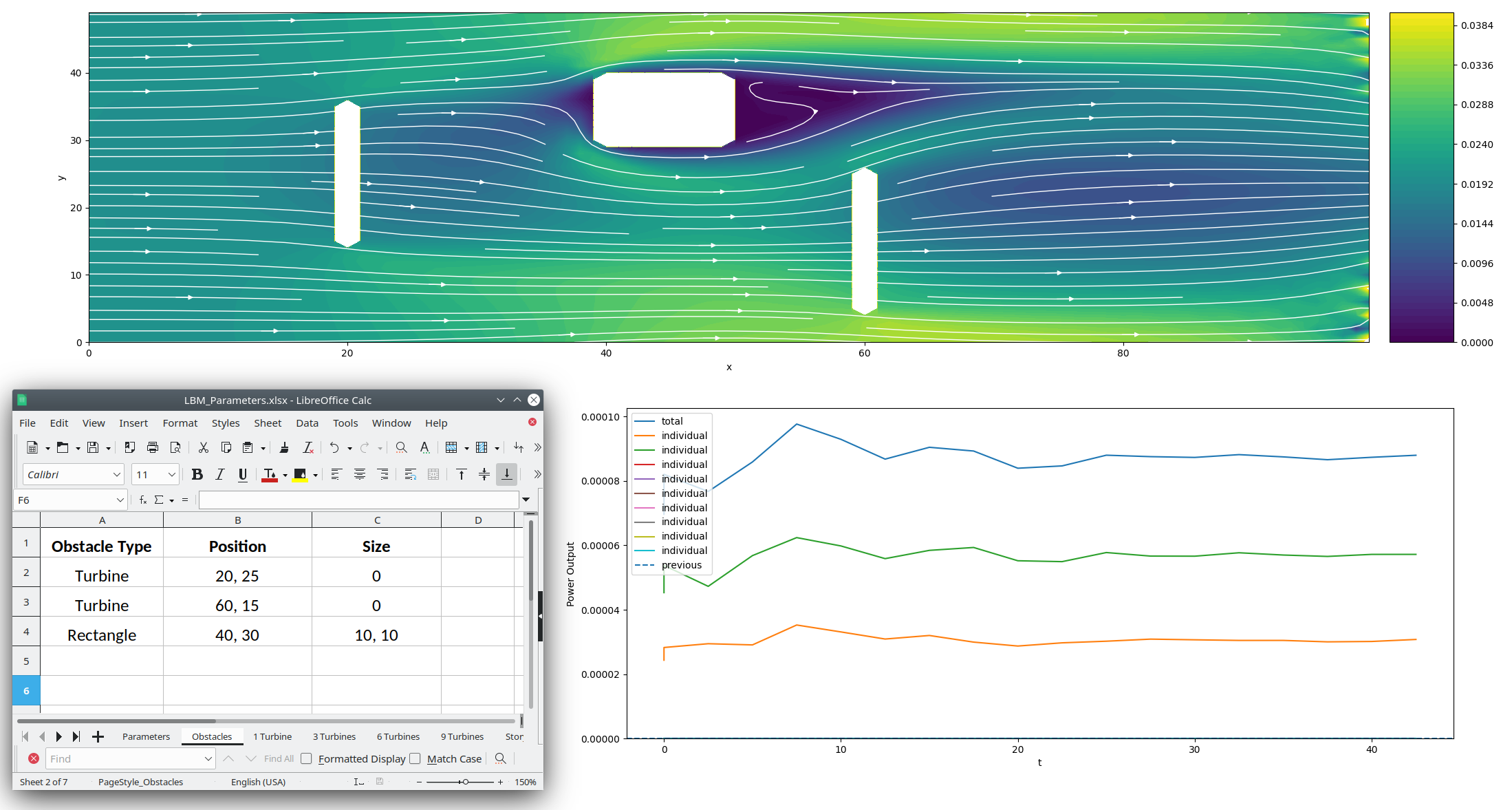Earlier this fall, Samuel Kemmler, a member of CEEC first through the partner FAU and now BAM, worked alongside other scientists in his field to organize a course of the “Ferienakademie” related to CFD. Taking place each end of summer, the Ferienakademie is organized by the Universität Erlangen-Nürnberg, Universität Stuttgart, and Technische Universität München. It consists of several courses, each dedicated to a specific topic: in this year’s case, the topic of “Simulation for the Energy Transition”. Students come from all three universities and apply for the course in which they are most interested.
From the 17th to the 29th of September, Samuel coordinated a project in which the students implemented a channel flow simulation, a rectangular simulation of fluid flow usually wider than it is tall with fluid flowing from one side to the other as if through a channel. In the case of this project, the simulation was 2-dimensional and the fluid was wind that flowed from left to right across a 2D simulation of wind turbines.

However, unlike most scientists running channel flow simulations, Samuel’s students did not use existing software libraries and frameworks to run their simulations. Instead, they wrote the software entirely from scratch to gain the experience of completely understanding what makes a channel flow simulation work. In this way, they had the opportunity to practice the simulation methodology step by step while writing and structuring their own code. They also, of course, experienced the pride and confidence of successfully building a channel flow simulation themselves.
Another feature of the students’ experience was their use of the lattice Boltzmann method to “play” with variables in their 2D channel simulations. This meant that they could interactively (while the simulation was running) place and move obstacles and wind turbines to see real-time results in terms of power generated by the wind turbines. Thus, they were able to investigate how different obstacle and wind turbine formations influence the power generation and how to optimally position the wind turbines for a given obstacle setup.
Although other methods can provide real-time simulation results and 2D is a far cry from reality, more realistic simulations generally require a great deal more computational power up to and including an entire exascale system. Nevertheless, through this summer course, more students got a chance to learn about the kind of work we are pursuing in CEEC.

